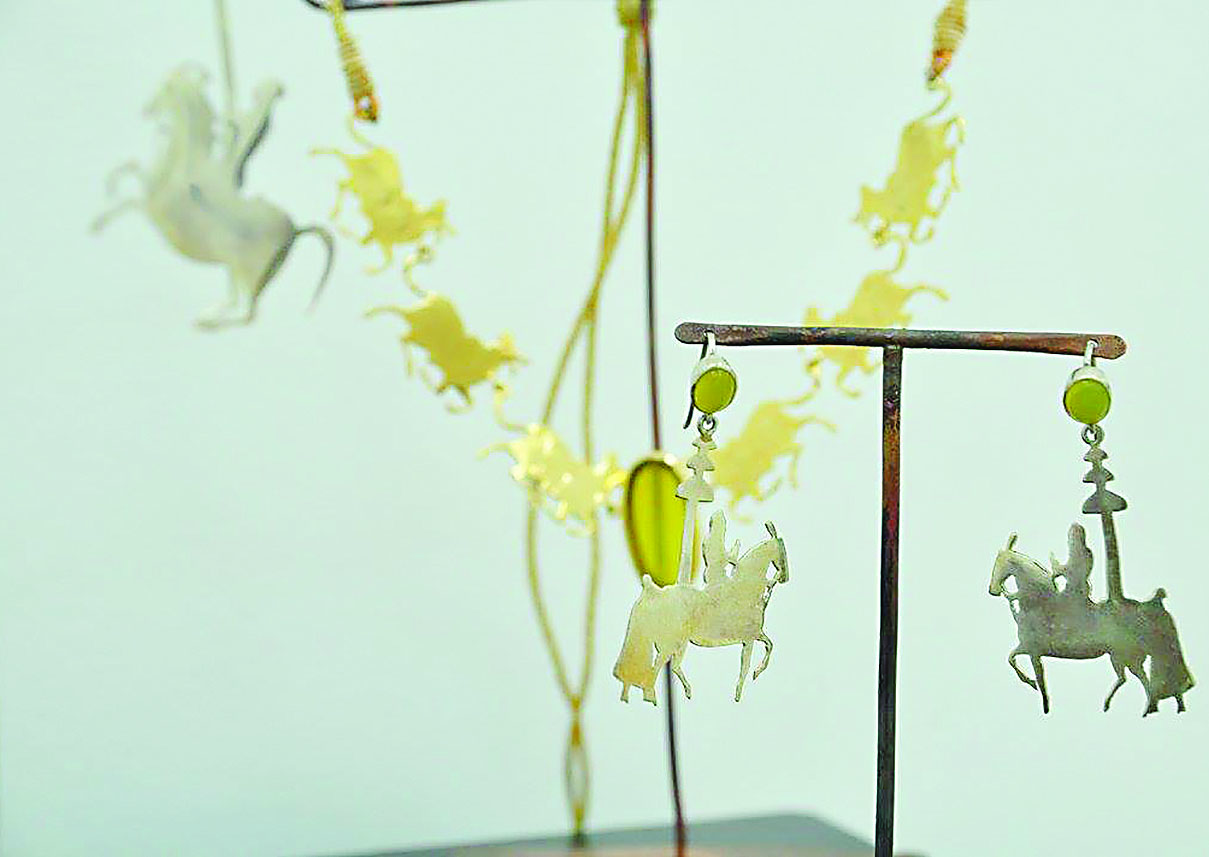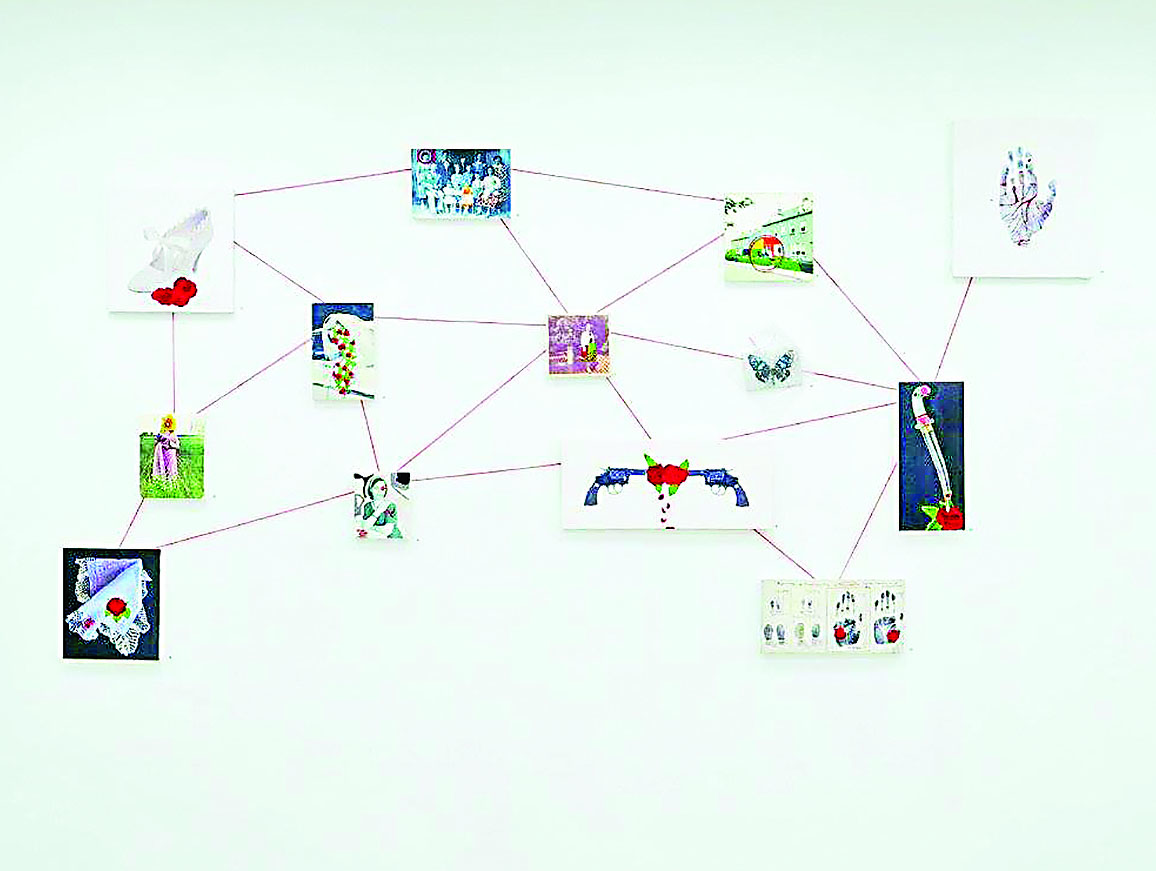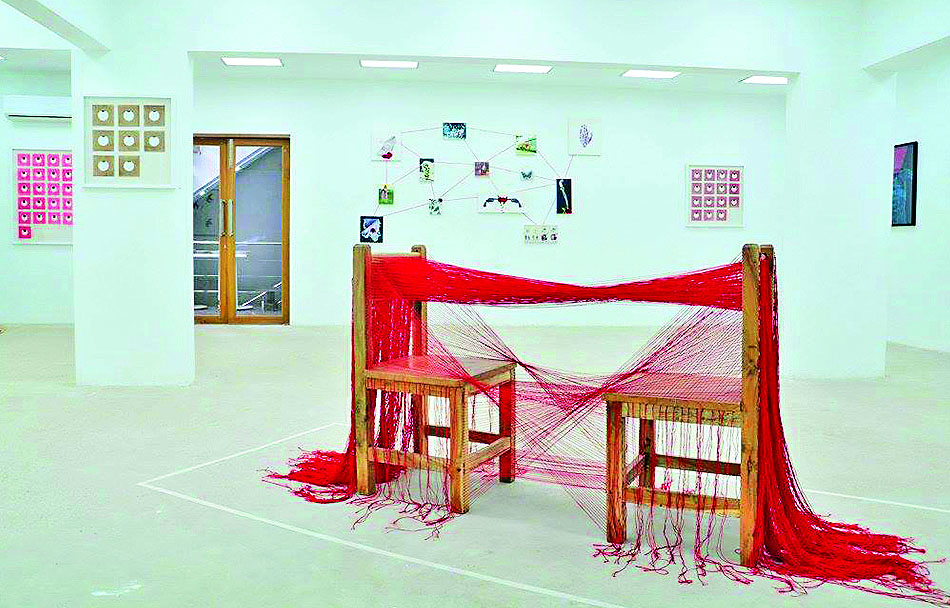Of all the crimes man commits, the act of murder, perhaps, gathers most attention from fellow humans. Everyone wants to find out something or the other about the act; the instinct is inborn.
Curated by Samina Islam, an art exhibition held a while back at Sanat Initiative,
“Who Killed Shumaila?”, took one through the work of nine artists who gave colour to their perceptions about a fictional case of a woman’s murder.
While the case was the same for all artists, they were given the freedom to approach it as they choose, even assuming the deceased to be unreal.
Artists Samina Islam, Affan Baghpati, Razin Rubin, Mir Dostak, Rabia S Akhtar, Feroza Gulzar, Mudassir Sheikh and Roohi Ahmed used different mediums, including videos and audio, to portray different sides of a single story.

The curator herself used old family pictures and lent them an eerie aura with blood stains splattered all across. Feroza Gulzar, who has previously experimented with moving images, returned with clips from CCTV footage that also gave a haunting effect.
Roohi Ahmed’s piece, ‘As Old as Time’, was particularly intriguing with a red silk thread weaved across two chairs, signifying conversations that hold extreme importance during investigations.
Mir Dostak had taken X-Ray images to show a sense of loss in the internal human body, probably also alluding to people’s mental which cannot be gauged by anyone else. Not only does this oppose racial intolerance, it also symbolises empathy, which many lack because their eyes can’t see beyond what seems the obvious.
Using the idea of the gaze, Razin Rubin used eyeballs to represent the society which would have judged the deceased, Shumaila, and how she would have shaped her own life due to the constant monitoring.

In an attempt to depict the value of discarded material, Affan Baghapti’s work was a collection of items which were once used in an everyday life. Hearing the perspectives of others regarding this case, Muddasir Sheikh used audio to go along with open-ended stories, creating soundtracks which lent a new angle to the story of the crime.
The sounds combined with visual works gave the audience a more realistic experience; a stronger connection to their feelings.

This picture taken on January 30, 2023, shows commuters passing through the Empress Market in Pakistan's port city of...
A representational image of K-Electric logo. — Twitter/FileK-Electric in its recent operations against illegal...
The poster of the Hamara Lyari Film Festival at Benazir Bhutto Shaheed University Lyari . —...
The Karachi Metropolitan Corporation’s building in Karachi. — APP FileThe Karachi Metropolitan Corporation has...
The convocation of the Sir Syed University of Engineering & Technology on April 26, 2024. — Facebook/ssuetiansSir...
The image released on Jul 17, 2016 shows Pakistan House in Karachi. — x/MQMPUpdatesThe Muttahida Qaumi...







